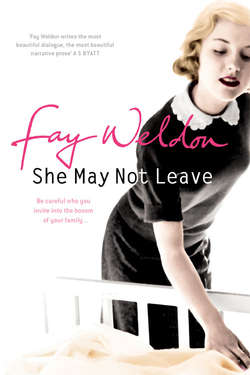Читать книгу She May Not Leave - Fay Weldon - Страница 15
Learned Characteristics
ОглавлениеBack in the sixties when we were in our early thirties, living round the corner from each other in Caldicott Square, Serena and I passed au pairs around like hot cakes. Nearly all of them were good girls, just a few were very flawed. But they all made their mark. I am sure some traces of various learned characteristics remain in my children, and in Serena’s too, to this day.
Roseanna, Viera, Krysta, Maria, Svea, Raya, Saturday Sarah – all will have had some input into what they became. Ours may have been the predominant influence, but I’m sure my Jamie learned from Viera how to get his way by sulking and from Sarah how to love in vain. It was from Maria that Lallie the flautist learned to despise us all, but from Roseanne how to value and respect fabrics. Lallie may be falling into bed with a lover but she won’t fling her clothes on the floor. She will place them neatly on the back of a chair, or indeed on a clothes rail. She is prepared to spend hours washing by hand, while I just bung things in the washing machine and hope for the best.
In the days of the many au pairs, I was working in the Primrosetti Gallery for a pittance, Serena was beginning to earn well as an advertising person, and George her new husband had just started his antiques shop. Serena and George lived in a big house in Caldicott Square. The girls lived in the basement, for I had no spare room for them, and though the basement was in its raw early-Victorian state, all damp walls and loose plaster, they did not seem to mind.
I have never been jealous of Serena, she is too amiable and generous for that, and takes her own position in the world lightly, thus obviating envy. She is also, frankly, fat and maintains that this is what has enabled her to survive as well as she has in a competitive world. ‘Oh, Serena!’ people say, ‘Sure she seems to have everything: money of her own making, a nice home, an attentive husband, her name in the papers, creativity, reputation, children – but isn’t she fat!’ And they can’t be bothered even to throw the barbs.
Back then in the sixties, working in advertising as she was, weighed daily by an expensive doctor in Harley Street and injected with some terrible substance made of pregnant mare’s urine, or some such, plus a daily dose of a crude amphetamine, Serena was thin and glamorous enough. Then indeed, yes, I was envious. Why is it so easy for her, I’d wonder, so hard for me? But then I’d think, well, my twenties were wildly good for me, in a desperate kind of way; hers, until she took up with George, were boring and anxious.
When Serena met George around her twenty-ninth birthday, it was as if some curse had lifted and all the jagged pieces of her life so amazingly and unexpectedly fell into place.
Before that she was a hopeless misfit, suffering from what they now call low self-esteem and an over-placatory nature.
The curse moved over from her to me – perhaps this is the fate of sisters – and it was my turn to endure a decade of blighted life as a single mother, trying to bring up two children – one a sports fanatic, the other, stunningly talented but basically unfriendly. Until then, I was the one who was enviable. I was thin and she was fat.
I daresay if you add up the anxious, tearful, tormented days and nights we have had throughout life, the pair of us, they come to about the same. I clocked up a good few in my seventy-first year, when Sebastian was held incommunicado in a Dutch police cell, and later in prison, but I don’t think as many as Serena did, flailing and wailing and staring into space, when George betrayed her, turned against her, locked her out of her home, around the time of her sixtieth birthday. She married again soon enough.
